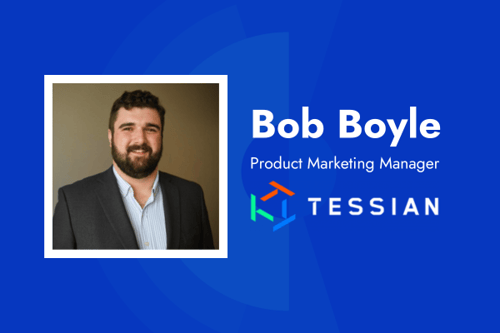This is a guest post from Ignition, the go-to-market ops platform. Visit haveignition.com to learn more!
In a crowded market, product quality is paramount. But even the most revolutionary products could easily get lost in the noise.
If your competitors nail the messaging, product launch strategy, and price point, your product could be drowned out — even if it’s objectively better.
This is one key reason why competitive analysis deserves more attention in the product launch planning cycle. Rigorously evaluating your direct and indirect competitors’ market strategy and product offerings can help you better position your products, find your ideal target audience, and ultimately win more market share.
Marketing messaging, promotions, and building a buzz are of course key product launch factors. But integrating strategic insights from competitive analysis is absolutely vital to a successful launch.
Put simply, competitive analysis in the product launch process is important because it allows firms to determine whether their new product is likely to be well received in the target market.
By the time you get to launch either you have a product that fills a customer need, or someone made an expensive mistake. So let's assume you do. You need to make sure your product and its benefits are properly framed, and delivered to the right audience. This framing, or positioning, and the messaging that goes with it will be influenced by the results of your competitor analysis. How are they framing their product? Who are they talking to? What works for them? What gaps are there? And how can you position yourself to fill them?
Comparing your product offering against products that fill a similar market niche will inform your decisions on messaging too, and ultimately on what marketing assets and collateral you create. What messaging are they using? How will you effectively communicate that you’re offering something truly unique, better, or cheaper than what’s currently available?
Let’s get a little more granular about how competitive intelligence analysis can benefit your next product launch.
1. Market Saturation
A stellar product can still fail if launched in an extremely saturated market. At the same time, a lackluster product offering can still find success if it fills a gap in the market.
Digging into the products, companies, and offerings you’re competing with helps firms gauge how saturated the market is. Data on current product demand and sales volume can influence strategy for messaging, pricing, your own internal sales goals, and more.
A saturated market doesn’t indicate a no-go. Rather, it means you need to get creative in differentiating your product from your competitors’.
2. Pricing Strategy
Consumers are highly price-sensitive, particularly as consumer confidence waivers as it has in this inflationary environment. A product’s pricing strategy can make or break success in this market.
Competitive pricing for your products is key to a successful product launch. But that doesn’t mean you need to be the cheapest option on the market — it just means that you need to identify your positioning in the current environment, and ensure your price point fits. Part of your messaging strategy will need to take your pricing strategy into account.
Maybe your product is a quality offering at an average price point. Perhaps it’s priced above-average, but offers exceptional quality. Or maybe it’s bundled in a package of products or services that make it a great value overall, without sacrificing margins.
Your pricing strategy should reflect your target market segment and ideal prospective customer base. It should be informed by rigorous consumer research, of course — but don’t overlook the role of competitive analysis in your pricing strategy.
3. Competitor Reputation
Product and company reputation matter in this market — perhaps more than most people think. Ipsos found that 87% of buyers take into account the reputation of the company when purchasing a solution, 86% of buyers will willingly pay more for a better customer experience, and 32% of consumers will walk away from a brand they love after a single bad experience.
This of course means that you should focus on delivering a great product and experience for your customers — but it also means that you can take advantage of competitor weaknesses when it comes to reputation.
Data on competitor reputation can influence your marketing and messaging strategy. This can be subtle, or not so subtle, like when Jack in the Box called McDonald's out for always having broken ice cream machines. It can also influence product development and pricing strategy — people will, after all, pay more for a more reputable company.
4. Unique Angling
Unique products stand out, plain and simple. Whether the uniqueness is in the product features or product design, the messaging strategy, product positioning, the price point, or anything else, it’s important to differentiate your products.
Competitor analysis allows you to identify opportunities to be unique and stand out from the crowd.
5. Sales & Marketing Strategy
Your sales and product marketing strategy is highly product-dependent. But digging into how your competitors are marketing their products can deliver valuable insights.
Maybe your competitors are only selling direct, and there’s a missed opportunity in selling on marketplaces. Perhaps you’re entering a legacy industry where eCommerce is underutilized. Or maybe your competitors are overly focused on social media marketing, and are overlooking old-school marketing channels like TV and radio.
Ultimately, competitive analysis is all about seeing what your competitors are doing, what’s working, and what’s not working — and using those insights to drive better outcomes for your own initiatives.
How to Collect and Analyze Competitor Intelligence in the Product Launch Planning Cycle
Competitive intelligence planning should ideally take place on an ongoing basis, but it’s essential whenever launching a new product.
It starts by collecting competitor data: Competitor pricing data, marketing and promotion records, social media posts and engagement, blog posts, legal filings, content publications, etc. from all your direct and indirect competitors.
Then you need to analyze that data to inform internal strategies. Understanding your competitors is all about how to learn from their strengths and weaknesses, to find out how your products can beat theirs.
Collecting and analyzing competitive data can be done manually, for instance by monitoring your competitor’s websites, social platforms, and PR buzz using a tool like Google News alerts. But it’s significantly easier with the use of Crayon, the leading AI-powered competitive intelligence platform.
Connect your competitive intel with a comprehensive GTM platform like Ignition and you’re in for a win. Ignition guides you through every step of setting up your GTM strategy, plan of action and the execution. It allows you to maintain a global view of the whole GTM process so that every launch is under close control, and communicate effectively with your team throughout the whole product launch — all this in one place.
Keep your friends close, and your competitors closer
Better understanding your competitors and their products can help you build a more comprehensive launch plan and win your next product launch. You’ll be able to price products more effectively, tailor your launch messaging to target gaps in your competitors’ strategy, and ultimately gain more market share.
But the work doesn’t end there. To stay competitive in today’s market, teams need to continually monitor their competitors.
Crayon is the leading competitive intelligence platform to help you gather competitor data, extract insights, and enable action to beat out the competition.

Related Blog Posts
Popular Posts
-
 The 8 Free Market Research Tools and Resources You Need to Know
The 8 Free Market Research Tools and Resources You Need to Know
-
 How to Measure Product Launch Success: 12 KPIs You Should Be Tracking
How to Measure Product Launch Success: 12 KPIs You Should Be Tracking
-
 24 Questions to Consider for Your Next SWOT Analysis
24 Questions to Consider for Your Next SWOT Analysis
-
 How to Create a Competitive Matrix (Step-by-Step Guide With Examples + Free Templates)
How to Create a Competitive Matrix (Step-by-Step Guide With Examples + Free Templates)
-
 6 Competitive Advantage Examples From the Real World
6 Competitive Advantage Examples From the Real World



